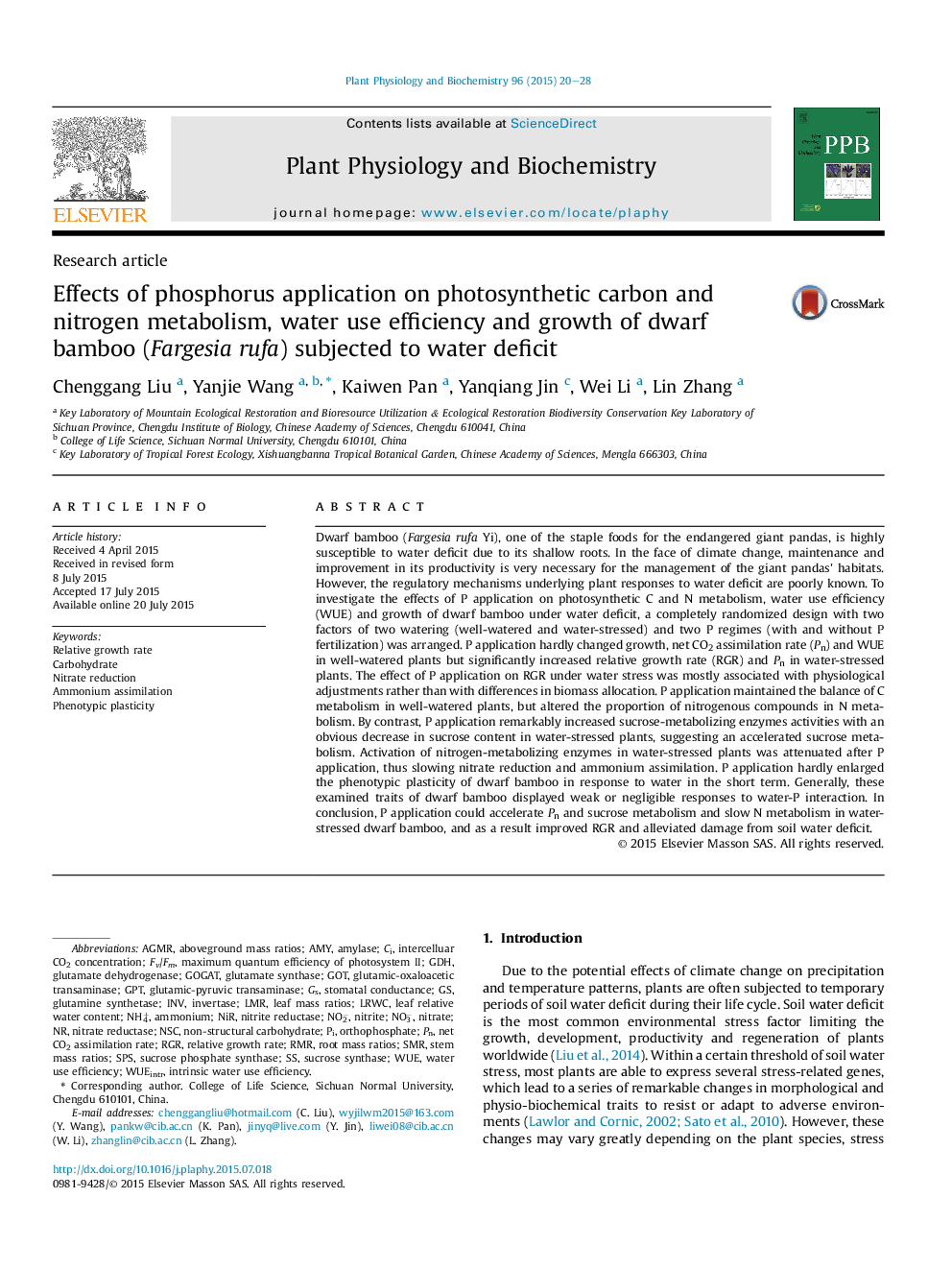| Article ID | Journal | Published Year | Pages | File Type |
|---|---|---|---|---|
| 8354589 | Plant Physiology and Biochemistry | 2015 | 9 Pages |
Abstract
Dwarf bamboo (Fargesia rufa Yi), one of the staple foods for the endangered giant pandas, is highly susceptible to water deficit due to its shallow roots. In the face of climate change, maintenance and improvement in its productivity is very necessary for the management of the giant pandas' habitats. However, the regulatory mechanisms underlying plant responses to water deficit are poorly known. To investigate the effects of P application on photosynthetic C and N metabolism, water use efficiency (WUE) and growth of dwarf bamboo under water deficit, a completely randomized design with two factors of two watering (well-watered and water-stressed) and two P regimes (with and without P fertilization) was arranged. P application hardly changed growth, net CO2 assimilation rate (Pn) and WUE in well-watered plants but significantly increased relative growth rate (RGR) and Pn in water-stressed plants. The effect of P application on RGR under water stress was mostly associated with physiological adjustments rather than with differences in biomass allocation. P application maintained the balance of C metabolism in well-watered plants, but altered the proportion of nitrogenous compounds in N metabolism. By contrast, P application remarkably increased sucrose-metabolizing enzymes activities with an obvious decrease in sucrose content in water-stressed plants, suggesting an accelerated sucrose metabolism. Activation of nitrogen-metabolizing enzymes in water-stressed plants was attenuated after P application, thus slowing nitrate reduction and ammonium assimilation. P application hardly enlarged the phenotypic plasticity of dwarf bamboo in response to water in the short term. Generally, these examined traits of dwarf bamboo displayed weak or negligible responses to water-P interaction. In conclusion, P application could accelerate Pn and sucrose metabolism and slow N metabolism in water-stressed dwarf bamboo, and as a result improved RGR and alleviated damage from soil water deficit.
Keywords
SPSLRWCGOGATLMRRMRSMRRGRGPTGDHWUENIRNSCINVFv/FmNH4+NO2−NO3−Ammonium assimilationAmmoniumamylaseOrthophosphateAMYinvertaseGOTWater use efficiencyGlutamic-oxaloacetic transaminaseIntrinsic water use efficiencySucrose phosphate synthaseSucrose synthaseLeaf relative water contentnet CO2 assimilation rateRelative growth rateNitratenitrate reductaseNitritenitrite reductaseStomatal conductancePhenotypic plasticityNitrate reductionCarbohydrateNon-structural carbohydrateglutamate dehydrogenaseglutamate synthaseGlutamine synthetaseglutamic-pyruvic transaminase
Related Topics
Life Sciences
Agricultural and Biological Sciences
Plant Science
Authors
Chenggang Liu, Yanjie Wang, Kaiwen Pan, Yanqiang Jin, Wei Li, Lin Zhang,
